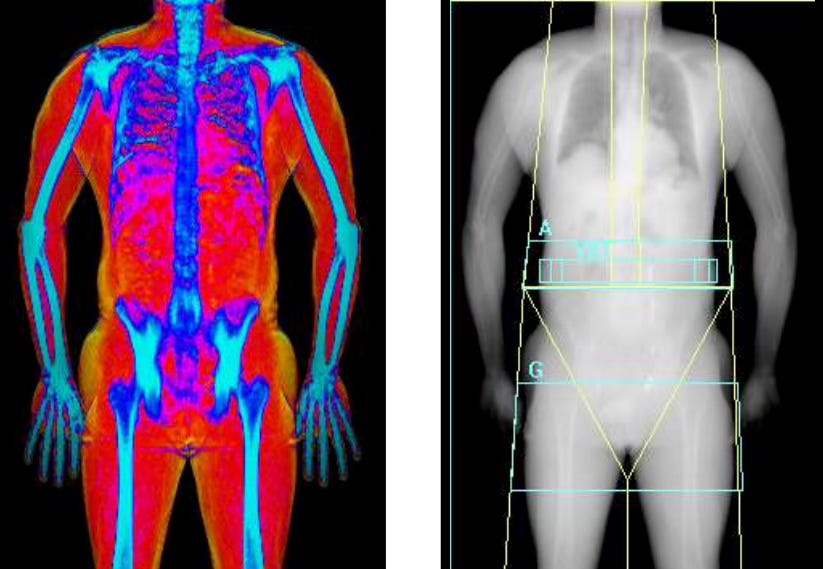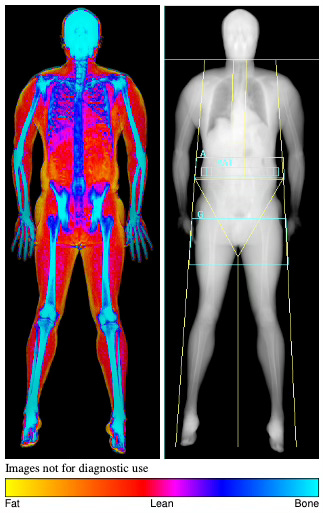Rob: “Your visceral fat is in the 70th percentile”.
Me: “That’s great”.
Rob: “That’s not the good end of the scale”.
Me: “Oh”.
I have pretty much always done sport. A lifelong cyclist - my very early years living in Belgium had left me with an abiding love of the sport - I have pretty much always cycled seriously, except for my university days and first few years working. In my twenties I also started weight training, something I still really enjoy today. So, in my mind at least, I am fairly fit and, by extension, pretty healthy.
Rob’s verdict on my DEXA scan was a real shock.
So, why was I here in central London, standing in only my underwear?
I had been reading Peter Attia’s super interesting book (Outlive) when I came across an interesting podcast hosted by Rich Roll where he and Simon Hill were discussing how to determine your health baseline and they brought up the topic of DEXA (Dual X-ray Absorptiometry) scans. I’d not previously heard of this procedure which is considered the gold standard of body composition analysis. My wife and I had also been discussing with some medic friends how Sniper Alley is a thing - the challenging years between 50 and 65 where your risk of succumbing to one of the major diseases jumps materially. We have lost dear, dear friends this year - all in this age cohort. All way too young.
So, in the spirit of deeper understanding - and to get that baseline - I signed us up (my wife Lisa sportingly joined the fray, warning me “If they tell me I’m fat you’re in so much trouble….”) for a baseline scan and a 3 month follow-up with the team at Bodyscan in Marylebone.
Primarily used to determine bone density, DEXA scans also provide a measure of both lean and fat mass and associated ratios. In addition it estimates visceral fat mass - the really unhealthy fat that wraps itself around your internal organs (and releases several substances into the bloodstream with the potential for a bunch of unwanted consequences).
This is where the reality check came. My visceral fat was high, worryingly high. Not quite in the ‘launch the lifeboats’ zone but definitely north of ‘healthy’. The remainder of the scan results were on the median save for my bone density which was in the 90th percentile (the good end this time) - you could pretty much throw me against a brick wall and I’ll bounce.
How could this be? I eat well. I exercise, regularly. Ok, I’ve always liked a drink but I’d cut that down recently to an occasional drink. While by no means fitness-model lean I didn’t see myself as overweight. I had been a chubby kid. Rob had my undivided attention. He advised that I needed to ensure I maintain a caloric deficit every day - or at least on average across the week. By bringing down my overall body fat level, the visceral fat would follow.
He ran the numbers. First, the base daily number of calories the scan calculated my body consumes at rest plus an allowance for my overall activity level (~2600). Second, to lose fat and maintain muscle mass the daily caloric deficit needed to be circa 300 calories. So, I was to now eat 2300 calories per day in total. More weight training, more protein, more pulses and legumes, less cheese and fewer (ok, no…) crisps. And then come back in 13 weeks for the follow up.
Not gonna lie - I was scared by the findings. Lisa, whose sole worrying marker was her low bone density, was also shocked. Given the next thirteen weeks had suddenly taken on a new look we did the only thing that seemed appropriate given the circumstances - we headed out for one last boozy lunch.
I truly believe the universe has a way of making itself heard. My wife loves - and I mean loves - charity shops. Me, not so much. Having enjoyed our lunch we went went into the Oxfam shop on Marylebone High St and while she thumbed through the clothes on racks I headed to the book section at the back. I am a sucker for non-fiction and scanning the shelves my eyes were drawn to one book in particular - Tim Ferris’s 4 Hour Body.
This well worn copy opened up right at the spot where he describes his “slow carb” diet. As I read through the list it was spooky - each meal consisted of protein, pulses/legumes and vegetables. I then searched my phone - turned out I already had this book in my Kindle library but it had remained unread. For 4 years. Serendipitous perhaps, or, and this is my preferred way of looking at these things, a big swing by the universe to ram home today’s news.
We needed a plan to support Rob’s advice and with this insight from Tim’s book and ideas from a few other sources I had read during the last few years, I sketched one out on the train home. Let’s see where we land. Roll on 13 weeks.
I’ll be sharing the plan, progress, learnings, and more about a DEXA scan in subsequent posts.
Please subscribe to this feed if you’d like to follow along.







This is excellent, thanks Stuart, I'm probably not alone in needing a push in this direction. I bought, and even downloaded, Tim Ferris's book on your recommendation. He seems to be promoting a large pizza on Saturdays. I'm thinking this could be the diet for me but should maybe read a bit further before opening up the Domino's app.